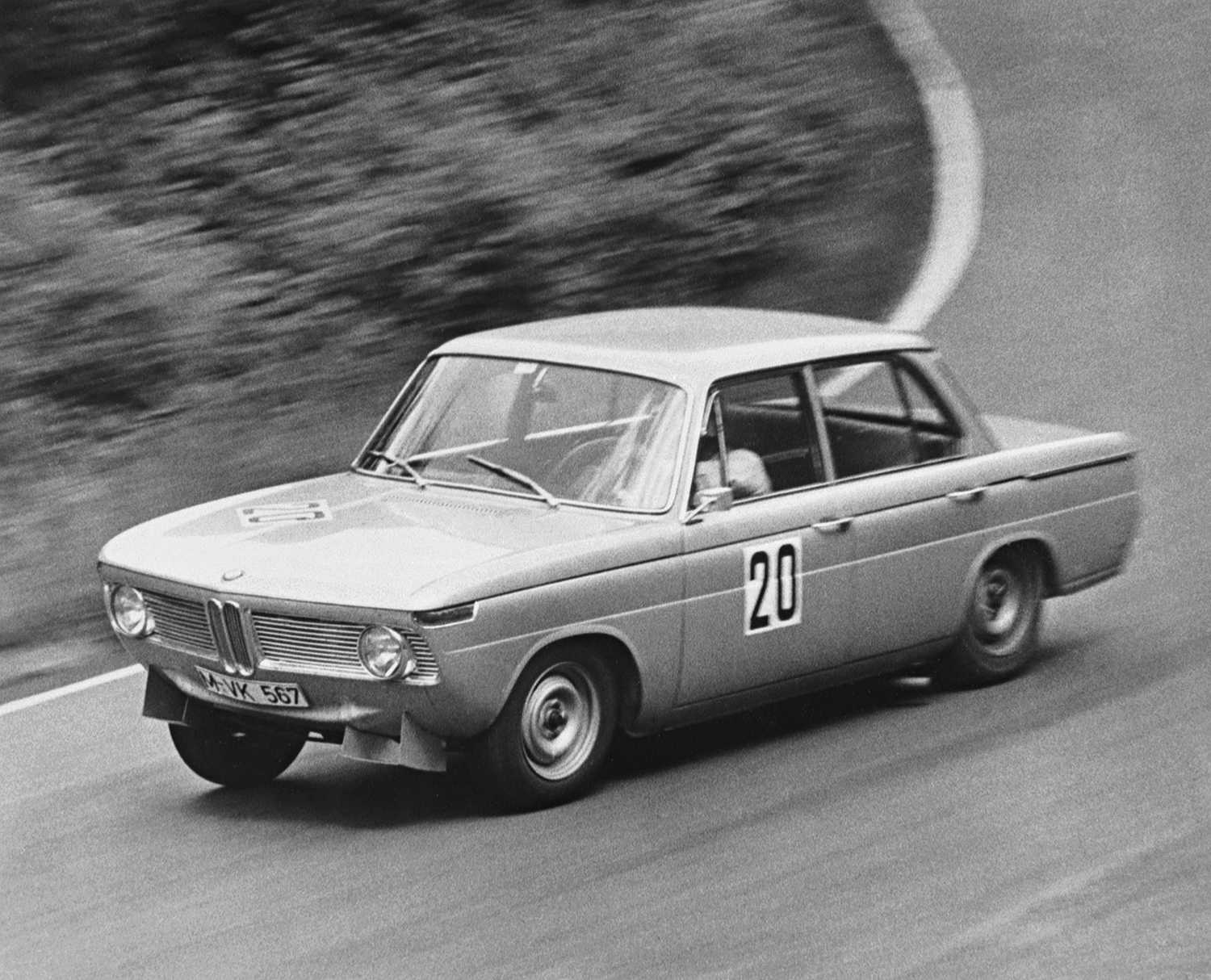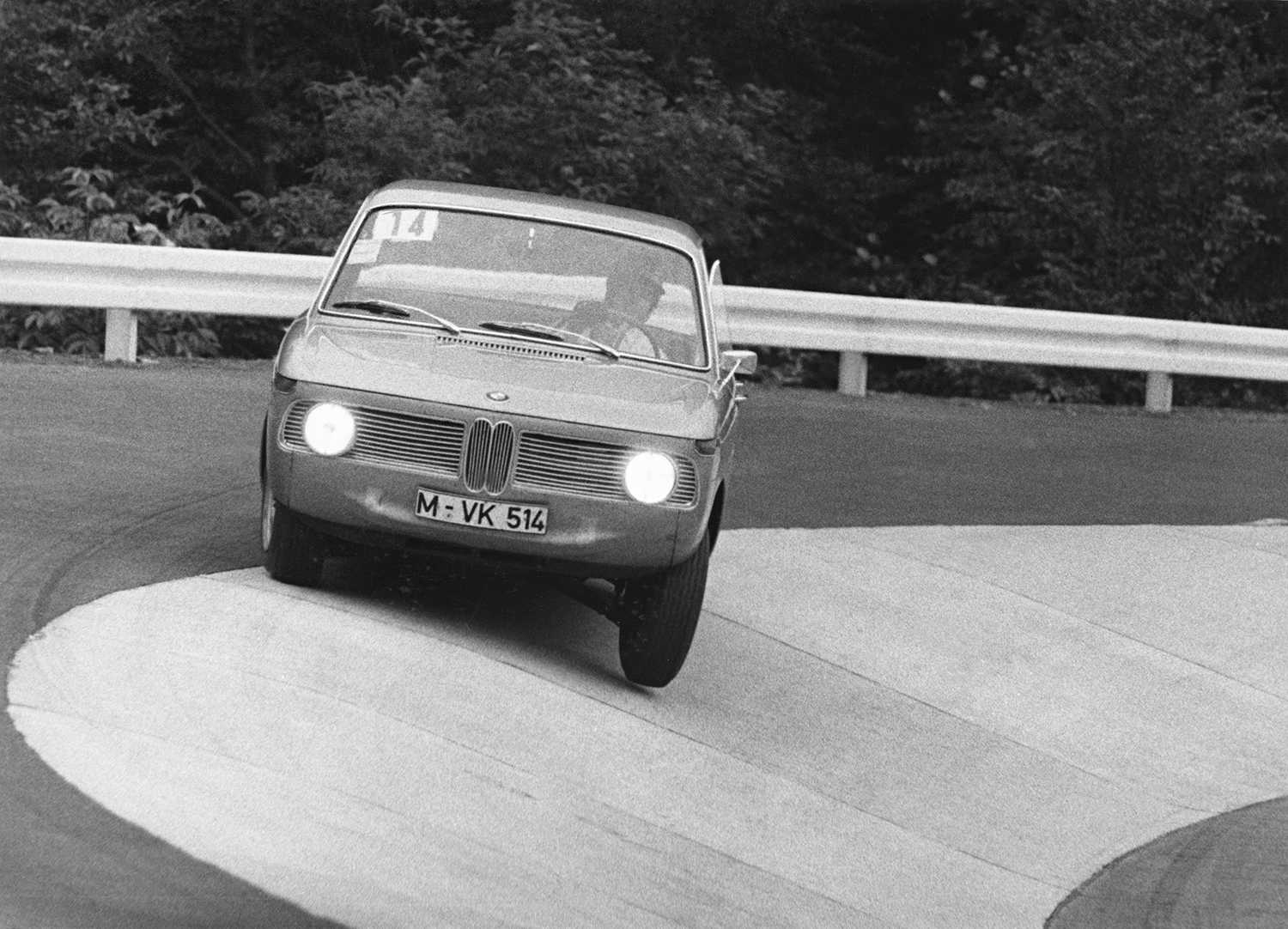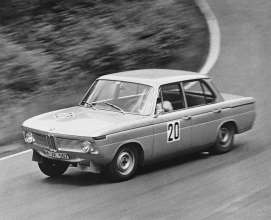In 1966 Hubert Hahne became the first person to dip below the magical ten-minute barrier for a lap of the Nürburgring. And he did it in a touring car which, to the naked eye, differed barely at all from the standard production models the man in the street was driving to work and heading out in for a Sunday morning spin. It was hard to think of a more effective demonstration of technical progress in automotive design. Sports sedans like the BMW 1800 TI and BMW 2000 TI duly came to encapsulate new dawns, the sense of speed and a fresh attitude to life.
Nürburgring, 6 August 1966. Fans had flocked to the Eifel Mountains in their hundreds of thousands to see the world’s best drivers fighting it out for glory in the Formula One German Grand Prix, by a distance the most important motor sport event of the year. However, sharing the bill with the headline act were races in various other categories, among them the hugely popular touring cars. In essence these racing machines didn’t look all that different from the family conveyances that had transported most of the buzzing hordes to the ‘Ring. The field included small cars and full-blown four-door sedans, and some of the racing machines, such as the Alfa Romeo Giulia Super and Lotus Cortina, already held legendary reputations. In 1964 the BMW 1800 TI joined them, Hubert Hahne piloting it to 14 wins in 16 races on his way to the German Circuit Championship crown.
The battle of the family sedans.
Now, though – two years down the line – the competition had got their act together. Hahne had been at the Nürburgring a month earlier, in July 1966, for the famous (and famously brutal) six-hour race. Here, the drivers lined up opposite their cars, and reacted to the starter’s signal by sprinting across the track, jumping in behind the wheel, firing up their engines and roaring off into the distance. These Le Mans-style starts were always spectacular and chaotic affairs, during which contact between the cars was the rule rather than the exception. Sharing a single cloud of dust, smoke and rubber, the cars hurtled into the unending, snaking twists of the Green Hell. The lap record for the ‘Ring had come down to around ten minutes and ten seconds, but nobody had yet glimpsed life on the other side of the mythical ten-minute mark. There was to be no joy in the six-hour race for BMW works driver Hahne, who was forced to retire with a broken rear suspension hub.
Who could break through the 10-minute wall?
And so we arrived at the warm-up races for the 1966 Grand Prix. This time Hahne was at the controls of a BMW 2000 TI, which differed from the standard production model only in its absence of bumpers. The cars had neither flared wheel arches nor spoilers, but their engines lapped up all the tuning experts could throw at them and produced as much as 185 hp (120 hp was standard). Having failed to finish at the ‘Ring a month earlier through no fault of his own, Hahne pushed and sometimes ventured beyond the limits in his determination to put things right. It was a spectacular sight, the BMW driver drifting his machine through corners, taking air over crests and clipping the bushes and hedges that were all part of the Nürburgring’s fabric at the time. Haring into view on the long start/finish straight, engine screaming at the leash, Hahne stopped the clock at 9 min. 58.5 sec., a new record! The crowd, many of whom saw Formula One as merely a side-show – duly went mad. The headlines the following day could talk of almost nothing else, as one of those rare, magical moments in racing took on epic proportions and “schöne Hubert” attempted to digest a similarly extraordinary personal triumph.
A passionate racing driver.
Hailing from Moers in Germany, Hubert Hahne began his career in 1960 at the age of 25. He started small – in the truest sense of the word – with an NSU Prinz, before switching to the widely beloved BMW 700. Hahne duly worked his way up the racing ladder and quickly became one of the “world’s best touring car drivers of the 1960s.” He went on to compete in formula racing as well, but was beset by a flood of technical problems. In 1970 he hung up his helmet and gloves after exactly ten years on the track and became a successful businessman.




